Scaffolding Rental Highland Heights
Top 10 Temporary Scaffolding in Highland Heights
Receive up to 3 Scaffolding Equipment Rental quotes for your project today! Compare profiles, reviews, accreditations, portfolio, etc... and choose the best deal.
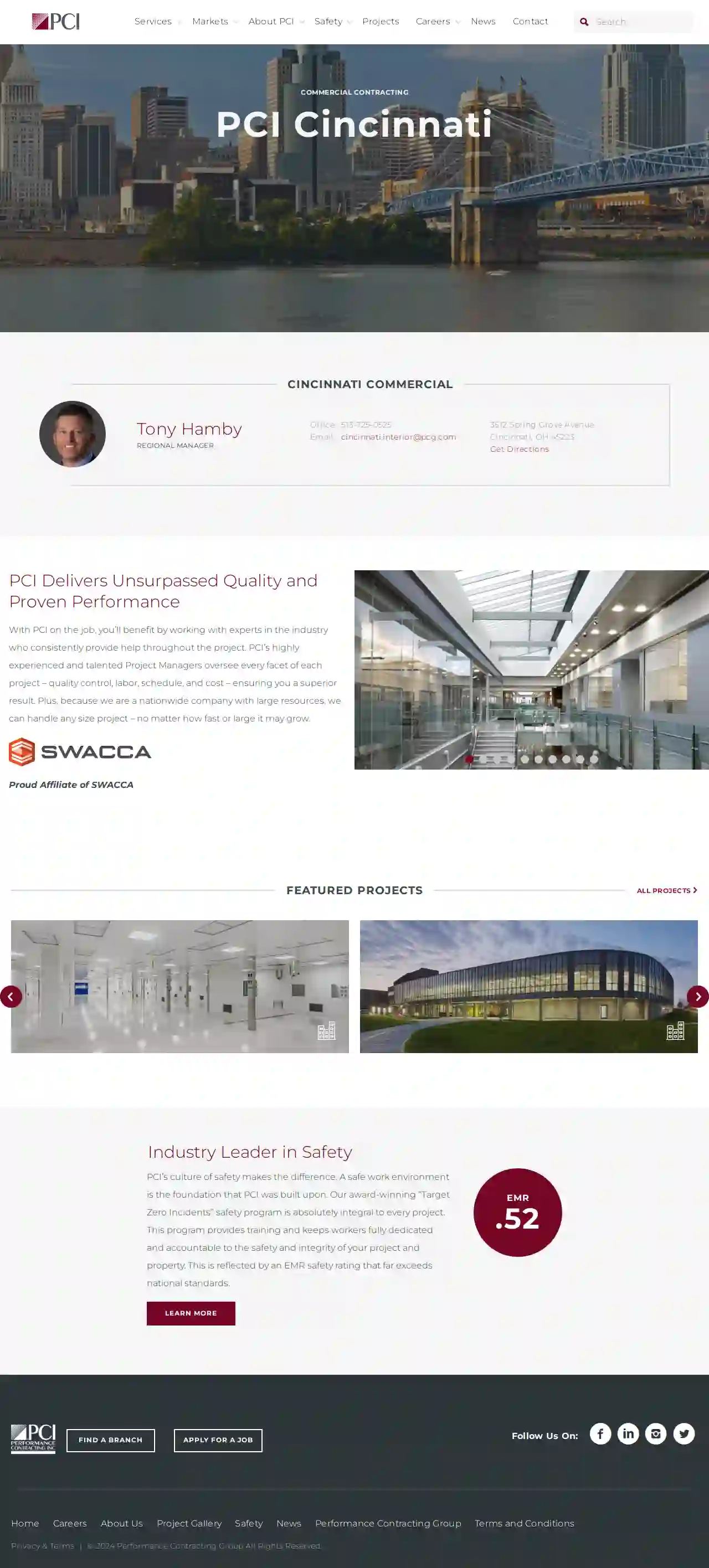
Performance Contracting Inc
4.77 reviewsCincinnati, OH, 3512 Spring Grove Avenue, 45223, USPerformance Contracting, Inc. is a top-tier specialty contractor in the United States, providing a wide range of services to industrial, commercial, and non-residential sectors. With over 60 years of experience, PCI delivers top-tier construction services, focusing on creativity, innovation, and customer satisfaction. PCI's integrated service offerings provide a comprehensive solution designed to streamline projects and increase overall efficiency. The company prioritizes safety, with an industry-leading EMR safety rating that far exceeds national standards.
- Services
- Why Us?
- Accreditations
- Our Team
- Testimonials
- Gallery
Get Quote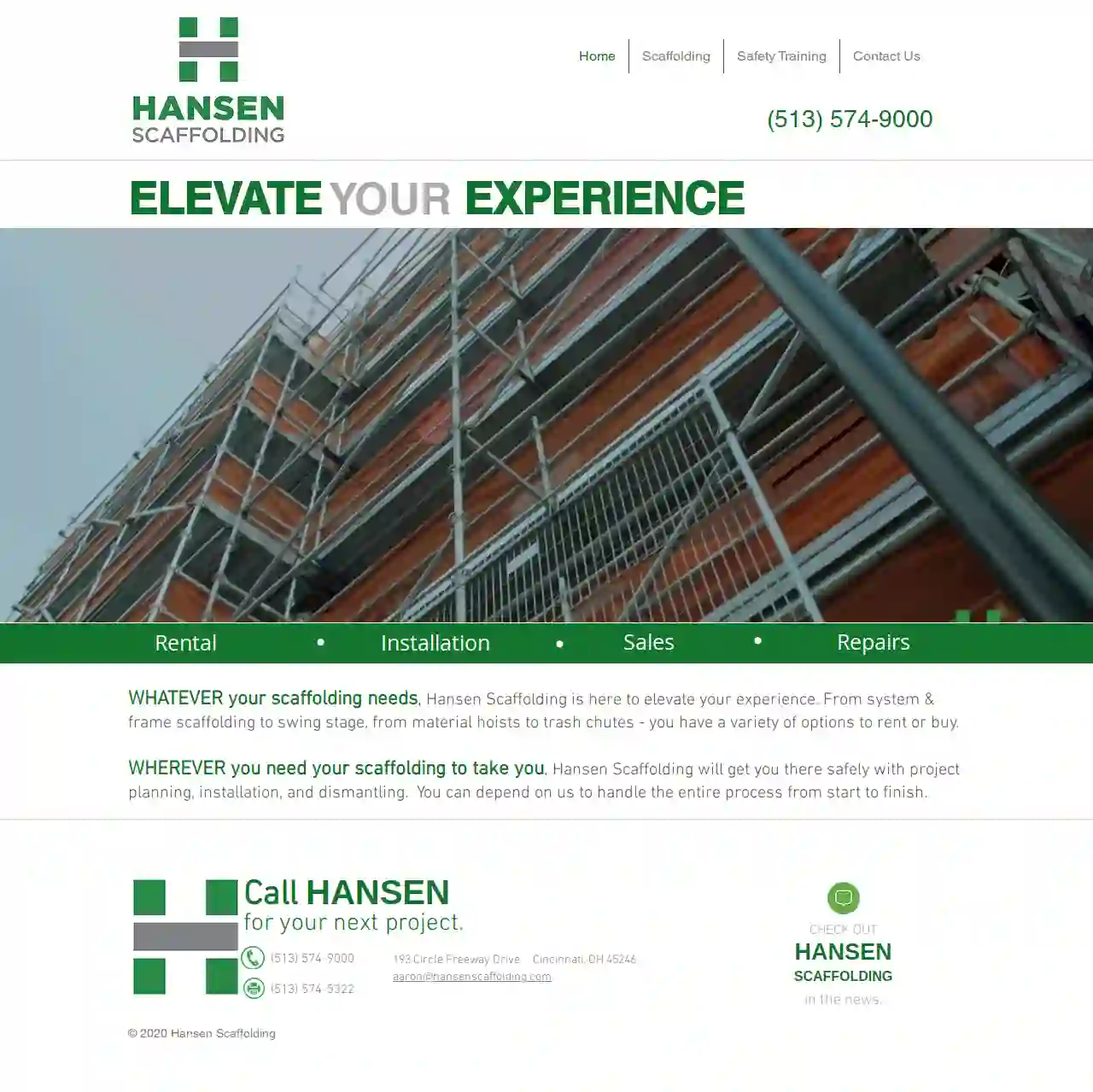
Hansen Scaffolding
4.76 reviews193 Circle Freeway Drive, Cincinnati, 45246, USAt Hansen Scaffolding, we're dedicated to providing top-notch scaffolding solutions for your next project. With a wide range of options to rent or buy, including system & frame scaffolding, swing stage, material hoists, and trash chutes, we've got you covered. Our team of experts will handle the entire process from start to finish, ensuring your project is completed safely and efficiently. From project planning to installation and dismantling, we're committed to delivering exceptional service and support. Our goal is to elevate your experience and provide you with the best possible scaffolding solutions. Contact us today to learn more about how we can help with your next project.
- Services
- Why Us?
- Gallery
Get Quote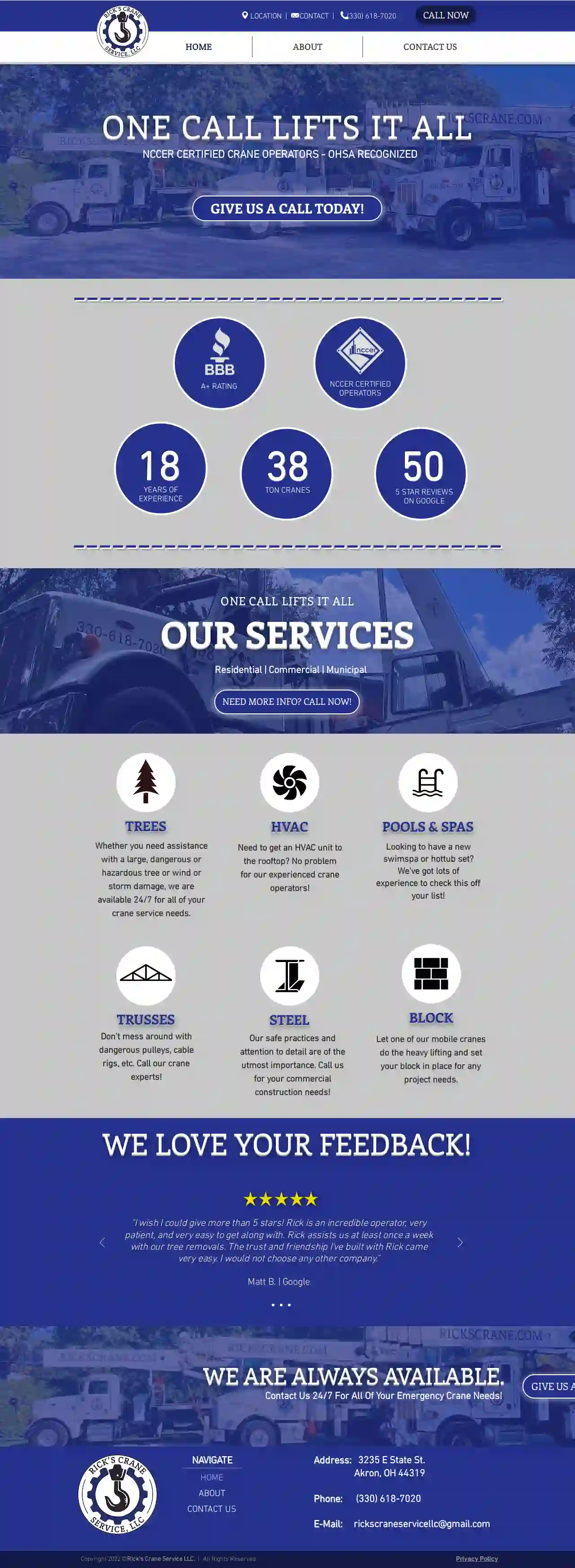
Ricks Crane Service LLC
551 reviews3235 E State St., Akron, 44319, USAt Rick's Crane Service LLC, we pride ourselves on being one of the most trusted and experienced crane service providers in the area. With over 18 years of experience and a team of NCCER certified crane operators, we're equipped to handle any job, big or small. Our services include residential, commercial, and municipal crane services, as well as specialized services like tree removal, HVAC unit installation, and pool and spa setup. We're committed to providing safe and efficient crane solutions that meet your needs and exceed your expectations. Contact us today to learn more about our services and how we can help you with your next project.
- Services
- Why Us?
- Accreditations
- Our Team
- Testimonials
- Gallery
Get Quote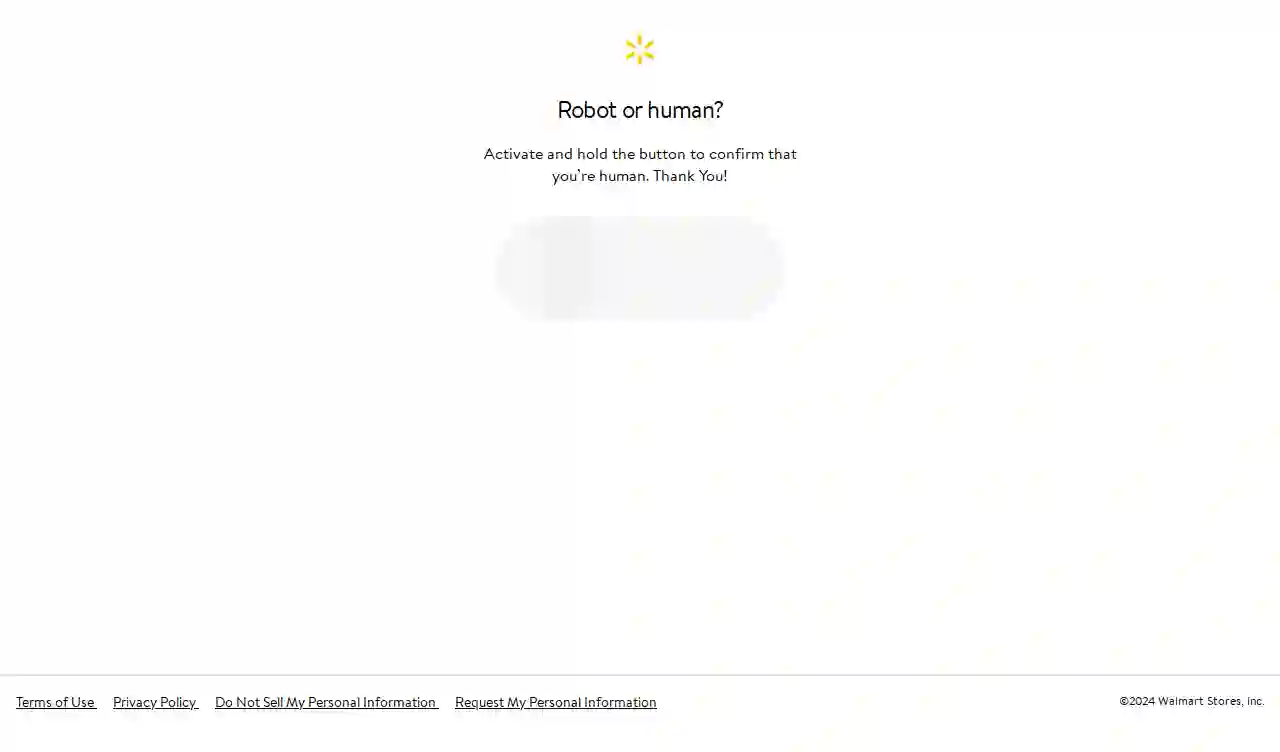
Walmart Supercenter
3.7Lorain, USWelcome to Walmart! Walmart is a leading retailer that offers a wide variety of products and services at affordable prices. We are committed to providing our customers with a convenient and enjoyable shopping experience. Whether you're looking for groceries, electronics, clothing, or home goods, you're sure to find what you need at Walmart. We are proud to serve our community and offer a wide range of services, including pharmacy, photo center, and money services. Our friendly and knowledgeable associates are always available to assist you with your shopping needs. Shop online or visit one of our stores today and experience the Walmart difference!
- Services
- Why Us?
- Gallery
Get Quote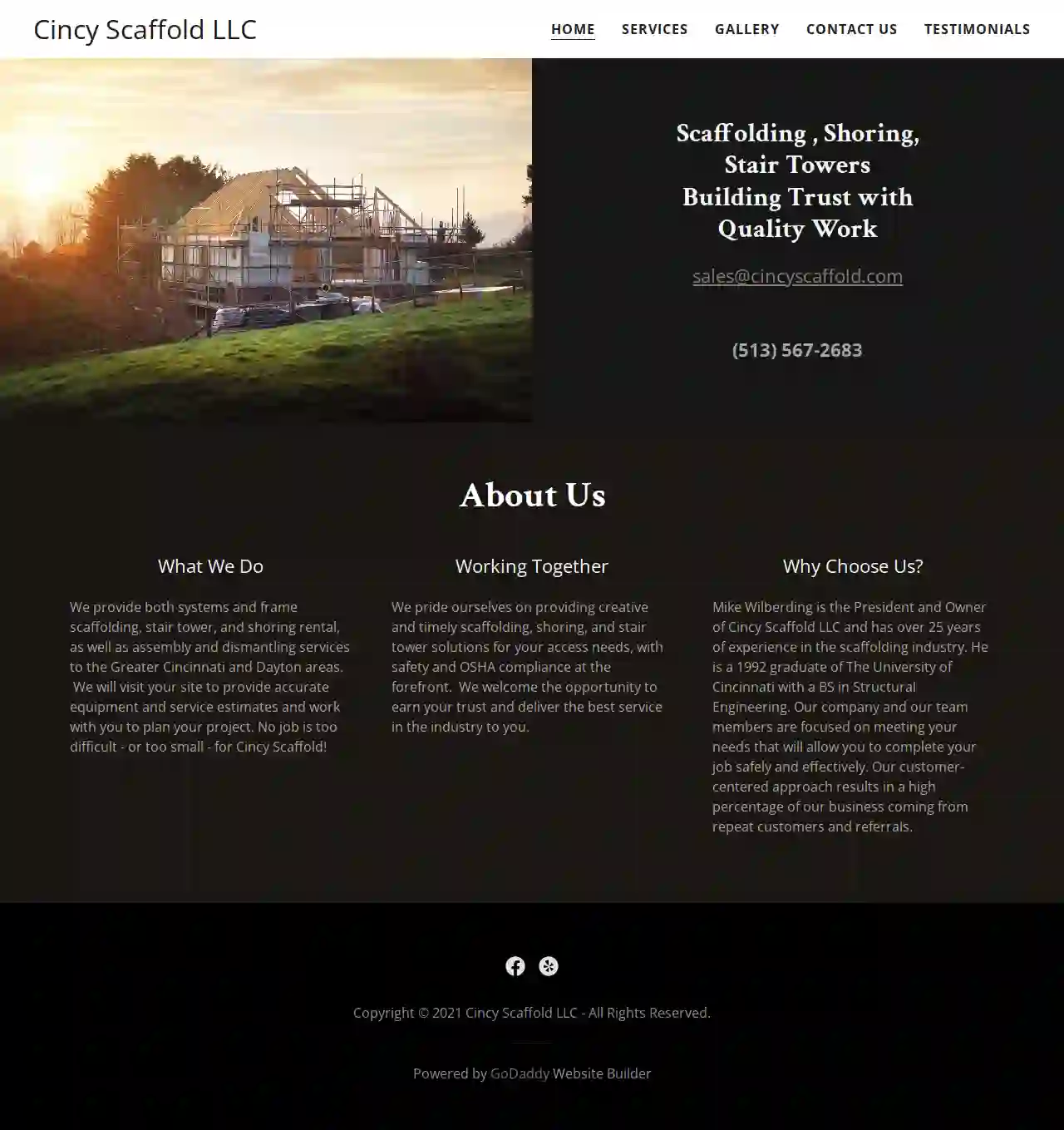
Cincy Scaffold LLC
52 reviewsP.O. Box 61, West Chester, 45071, USAt Cincy Scaffold LLC, we pride ourselves on providing creative and timely scaffolding, shoring, and stair tower solutions for your access needs. With over 25 years of experience in the scaffolding industry, our team is focused on meeting your needs to complete your job safely and effectively. We welcome the opportunity to earn your trust and deliver the best service in the industry to you. Our customer-centered approach results in a high percentage of our business coming from repeat customers and referrals. We provide both systems and frame scaffolding, stair tower, and shoring rental, as well as assembly and dismantling services to the Greater Cincinnati and Dayton areas. We will visit your site to provide accurate equipment and service estimates and work with you to plan your project. No job is too difficult - or too small - for Cincy Scaffold!
- Services
- Why Us?
- Our Team
Get Quote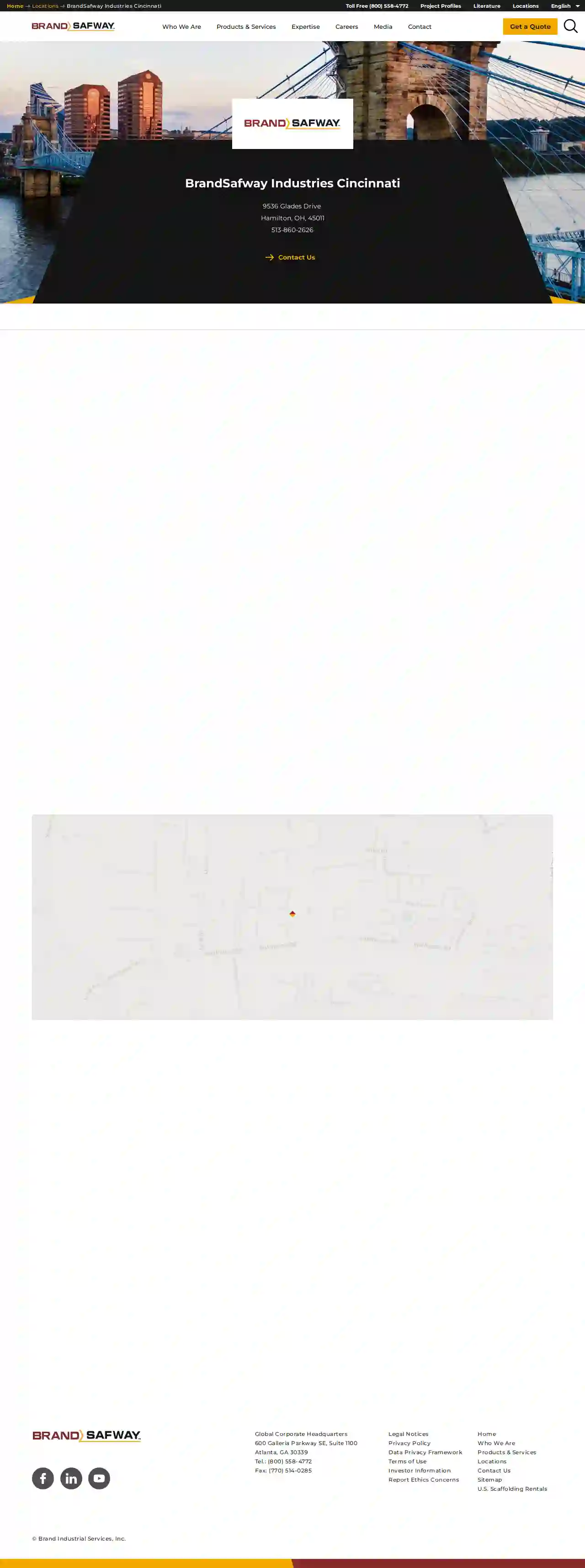
BrandSafway Industries Cincinnati
4.73 reviews123 Main St, Cincinnati, OH, 45202, USBrandSafway is a leading provider of access solutions, including scaffolding, aerial work platforms, and forming and shoring equipment. With a strong commitment to safety, quality, and customer satisfaction, BrandSafway offers a wide range of services tailored to meet the unique needs of clients across various industries. Their team of experienced professionals works closely with clients to understand their requirements and deliver customized solutions that enhance efficiency and productivity. BrandSafway is dedicated to providing innovative access solutions that ensure safe and efficient project execution.
- Services
- Why Us?
- Accreditations
- Our Team
- Testimonials
Get Quote
Quality Glass & Mirror Inc
4.480 reviews1747 Copley Road, Akron, 44309, USAt Quality Glass & Mirror, Inc., we offer a wide range of services to meet your needs. From glass replacement for windows to custom glass shower enclosures, custom mirrors, custom table tops, rescreening or making new screen frames, and much more! Our team of experts is here to help turn your dreams into reality. Give us a call or bring something by our shop at 1747 Copley Road to see if we can assist you! Our gallery has many photos to help spark your imagination!
- Services
- Why Us?
- Accreditations
- Our Team
- Testimonials
- Gallery
Get Quote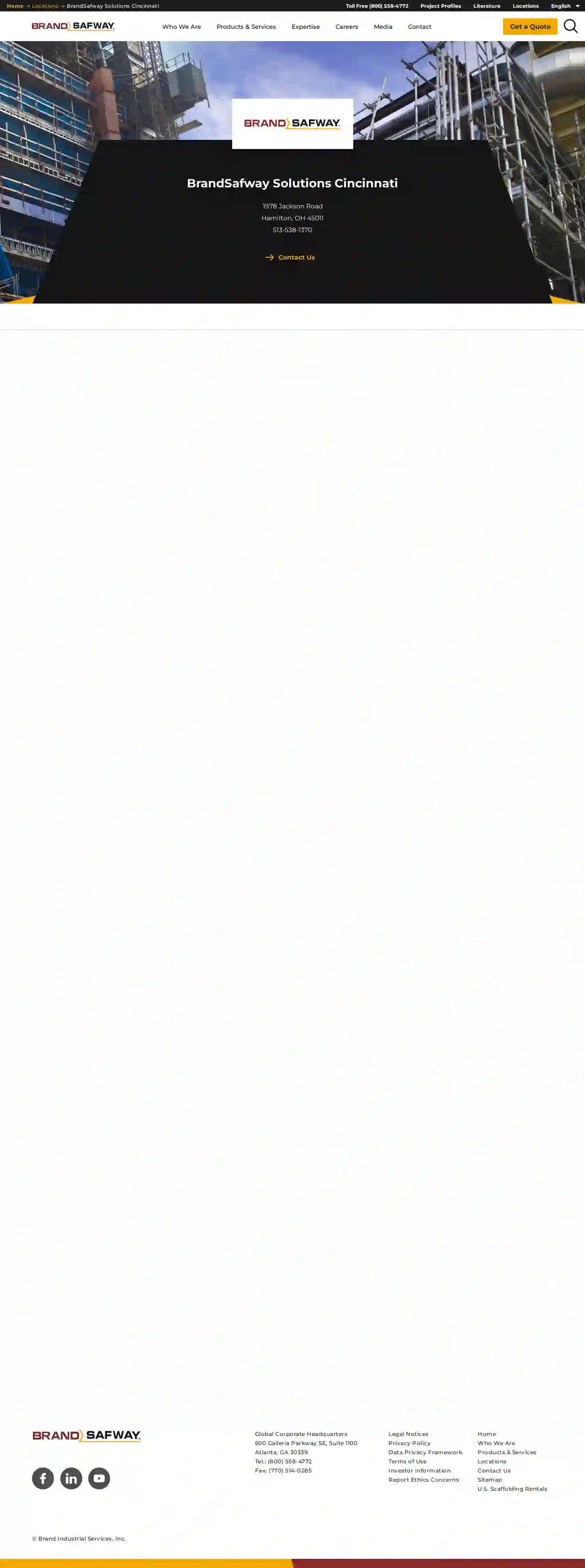
BrandSafway Solutions Cincinnati
4.33 reviews123 Access Lane, Cincinnati, 45202, USBrandSafway is a leading provider of access solutions, including scaffolding, aerial work platforms, and forming and shoring. With a strong presence in Cincinnati and Hamilton, the company offers a wide range of services to meet the needs of various industries. BrandSafway is committed to safety, innovation, and customer satisfaction, making it a trusted partner for businesses in the region.
- Services
- Why Us?
- Accreditations
- Our Team
- Testimonials
Get Quote
American Scaffolding Inc
54 reviews7161 Eagle Creek Rd, Cincinnati, 45247, USAmerican Scaffolding Inc. is a full-service scaffold company based in Cincinnati, OH, with a branch in Cleveland, OH. We specialize in providing quality, dependable scaffold equipment and work. Our company has been delivering excellent service for over 30 years, and we continue to prioritize quality customer service to meet all your access needs. Our mission is to provide the safest, most efficient, and reliable products in the ever-changing construction industry. We pride ourselves on our prompt service that caters to the fast-paced demands of the construction industry. Our adaptive ability and creative thinking allow us to conform to any project's needs. We offer rental, sales, erection, and dismantle of frame, system, and shoring scaffold, including Bee Access & Altrex suspended scaffold and more. We also offer a full line of fall protection equipment from various vendors.
- Services
- Why Us?
- Gallery
Get Quote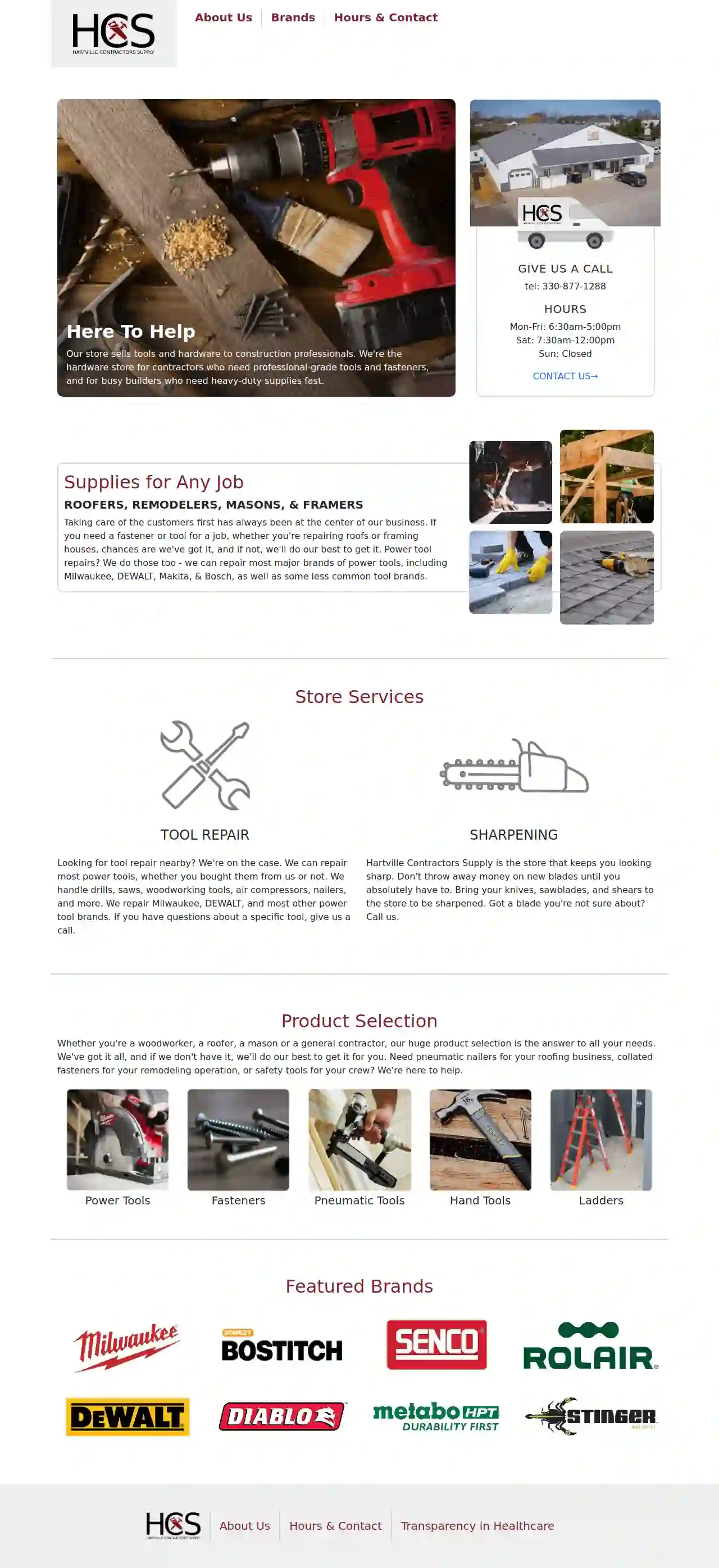
Hartville Contractors Supply
4.845 reviewsHartville, Ohio, 281 Market Ave. SW, 44632, USHartville Contractors Supply is a professional-grade tool and fastener supplier located in Hartville, Ohio. Founded by Mark Wagler in 1987, the business started as a distributor for collated nails and other fasteners. Over time, it expanded to include construction materials, power tools, and masonry hardware. The company's mission is to provide high-quality tools and supplies at fair prices to contractors and tradespeople. Located at 281 Market Ave. SW, Hartville, OH, 44632, the store serves Stark and Summit counties, including Canton, Akron, and surrounding areas.
- Services
- Why Us?
- Gallery
Get Quote
Over 2,353+ Scaffolding Businesses on our directory
Our scaffolding companies operate in Highland Heights & beyond!
ScaffoldingHQ has curated and vetted the Best Scaffolding Contractors in Highland Heights. Find a trustworthy contractor today.
Frequently Asked Questions About Scaffolding Rental
- Save Time: Easily compare quotes from multiple reputable scaffolding rental companies in one place.
- Find Local Providers: Quickly locate scaffolding companies serving your area.
- Get Competitive Rates: Access a network of rental providers, allowing you to compare prices and find the best deal.
- Ensure Safety and Quality: We partner with companies that prioritize safety and adhere to industry standards.
- Access Expert Support: Our customer support team is here to assist you throughout the rental process.
- Wear a Safety Harness: Always wear a properly fitted safety harness and secure it to a designated anchor point on the scaffolding.
- Inspect Before Use: Check for any damage or loose components before each use.
- Keep the Platform Clear: Remove tools, materials, and debris to prevent tripping hazards.
- Never Overload the Scaffolding: Stay within the maximum load capacity indicated on the scaffolding tag.
- Be Weather Aware: Avoid working on scaffolding during high winds, storms, or icy conditions.
- Use Proper Access: Use designated ladders or stairs to access and exit the scaffolding platform.
- Follow Training: Ensure all workers on the scaffolding have received proper safety training.
- Reputation and Experience: Look for a company with a good track record and a history of satisfied customers.
- Licensing and Insurance: Ensure they have the proper licenses and insurance coverage to protect you from liability.
- Safety Practices: Inquire about their safety policies, training programs, and inspection procedures.
- Equipment Availability and Quality: Confirm they have the type of scaffolding you need and that it's in good condition.
- Pricing and Rental Terms: Compare quotes and assess the rental rates, duration, and any additional fees.
- Customer Service: Choose a company that is responsive, communicative, and helpful.
- Residential: Roofing repairs and replacements, siding installations, painting projects, window replacements, gutter cleaning and repairs, chimney repairs, solar panel installations.
- Commercial: Building construction and renovations, facade repairs and cleaning, window cleaning, painting, sign installation, and maintenance of high-rise structures.
- Industrial: Plant maintenance, access to elevated equipment, tank inspections and repairs, bridge repairs, and other industrial construction projects.
- Events: Temporary stages, grandstands, lighting and sound rigging, and platforms for concerts, festivals, and sporting events.
What are the benefits of using a scaffolding directory like ScaffoldingHQ?
What are the safety precautions when working on scaffolding?
What are some things to consider when choosing a scaffolding rental company?
What are some common uses for scaffolding rentals?
What are the benefits of using a scaffolding directory like ScaffoldingHQ?
- Save Time: Easily compare quotes from multiple reputable scaffolding rental companies in one place.
- Find Local Providers: Quickly locate scaffolding companies serving your area.
- Get Competitive Rates: Access a network of rental providers, allowing you to compare prices and find the best deal.
- Ensure Safety and Quality: We partner with companies that prioritize safety and adhere to industry standards.
- Access Expert Support: Our customer support team is here to assist you throughout the rental process.
What are the safety precautions when working on scaffolding?
- Wear a Safety Harness: Always wear a properly fitted safety harness and secure it to a designated anchor point on the scaffolding.
- Inspect Before Use: Check for any damage or loose components before each use.
- Keep the Platform Clear: Remove tools, materials, and debris to prevent tripping hazards.
- Never Overload the Scaffolding: Stay within the maximum load capacity indicated on the scaffolding tag.
- Be Weather Aware: Avoid working on scaffolding during high winds, storms, or icy conditions.
- Use Proper Access: Use designated ladders or stairs to access and exit the scaffolding platform.
- Follow Training: Ensure all workers on the scaffolding have received proper safety training.
What are some things to consider when choosing a scaffolding rental company?
- Reputation and Experience: Look for a company with a good track record and a history of satisfied customers.
- Licensing and Insurance: Ensure they have the proper licenses and insurance coverage to protect you from liability.
- Safety Practices: Inquire about their safety policies, training programs, and inspection procedures.
- Equipment Availability and Quality: Confirm they have the type of scaffolding you need and that it's in good condition.
- Pricing and Rental Terms: Compare quotes and assess the rental rates, duration, and any additional fees.
- Customer Service: Choose a company that is responsive, communicative, and helpful.
What are some common uses for scaffolding rentals?
- Residential: Roofing repairs and replacements, siding installations, painting projects, window replacements, gutter cleaning and repairs, chimney repairs, solar panel installations.
- Commercial: Building construction and renovations, facade repairs and cleaning, window cleaning, painting, sign installation, and maintenance of high-rise structures.
- Industrial: Plant maintenance, access to elevated equipment, tank inspections and repairs, bridge repairs, and other industrial construction projects.
- Events: Temporary stages, grandstands, lighting and sound rigging, and platforms for concerts, festivals, and sporting events.